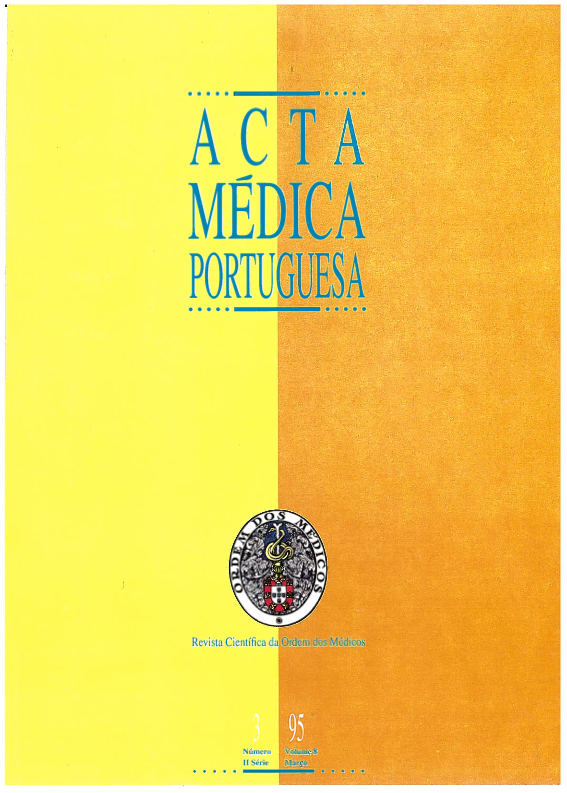The effect of the woman's age, the rate of cleavage and embryo quality on obtaining a pregnancy by in-vitro fertilization.
DOI:
https://doi.org/10.20344/amp.2682Abstract
Multiple factors influence the probability of obtaining a pregnancy through in vitro fertilization (IVF) and embryo transfer (ET). This retrospective study was designed to assess their importance in order to improve prognostic ability and treatment success. 341 consecutive embryo transfer cycles using the same ovarian stimulation protocol were considered and divided in two main groups: 92 cycles in which a clinical pregnancy was achieved and 249 cycles without success. All the embryo transfers were performed in patients from the in vitro fertilization program of the Human Reproductive Unit, Santa Maria Hospital, Lisbon, between January 1991 and December 1993. No significant differences were found between the two groups studied concerning the IVF indications, ovarian response to the stimulation, sperm quality, oocyte maturation and mean number of oocytes retrieved per patient. The women's age was higher in the group which did not achieve a pregnancy, when compared with the pregnant group (p < 0.001), showing a decline of success after the age of 35. Overall oocyte fertilization rate was 88.2% in cycles with pregnancy and 83.5% in cycles without pregnancy (p < 0.02). In the pregnant patients, there was a significantly higher rate of embryo transfers in which all the embryos received had reached at least the four-cell stage at 42-43 hr postinsemination, compared with the non pregnant patients (82% versus 63%, p < 0.001). All the 92 pregnancies originated from transfers of at least one embryo that had undergone two or more mitotic divisions.(ABSTRACT TRUNCATED AT 250 WORDS)Downloads
Downloads
How to Cite
Issue
Section
License
All the articles published in the AMP are open access and comply with the requirements of funding agencies or academic institutions. The AMP is governed by the terms of the Creative Commons ‘Attribution – Non-Commercial Use - (CC-BY-NC)’ license, regarding the use by third parties.
It is the author’s responsibility to obtain approval for the reproduction of figures, tables, etc. from other publications.
Upon acceptance of an article for publication, the authors will be asked to complete the ICMJE “Copyright Liability and Copyright Sharing Statement “(http://www.actamedicaportuguesa.com/info/AMP-NormasPublicacao.pdf) and the “Declaration of Potential Conflicts of Interest” (http:// www.icmje.org/conflicts-of-interest). An e-mail will be sent to the corresponding author to acknowledge receipt of the manuscript.
After publication, the authors are authorised to make their articles available in repositories of their institutions of origin, as long as they always mention where they were published and according to the Creative Commons license.









